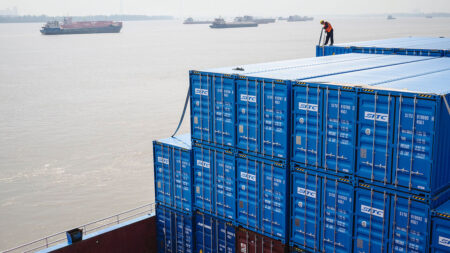Donald Trump’s controversial announcement regarding tariffs on April 2nd has evoked a wave of skepticism and mockery, primarily due to the flawed arithmetic behind its rationale. The approach taken appears to equate any bilateral trade deficit with fundamental injustice. Specifically, the tariff rates were determined by calculating a trade deficit as a portion of goods imported from various nations, and then simply dividing that figure by two. This method itself raises eyebrows, but the intricacies of the calculations present even further peculiarities.
For instance, the tariffs seem to be assigned based on countries that possess certain internet domain names, presenting an odd and arbitrary criterion for what should ordinarily be a serious economic discussion. Moreover, these tariffs are based predominantly on data from a single year, which overlooks the complexities and variations in trade that can occur over time. Such anomalies highlight the shortcomings in the proposed tariff framework, with the most glaring example being the unexpected and often bizarre classifications of duties that arise from this flawed methodology.
This brings us to a closer examination of some of the more outrageous outcomes as a result of these tariffs. Moving beyond mere economic analysis, we delve into a list of what can unequivocally be called the five craziest tariffs that emerged from Trump’s announcement. The intention was presumably to address unfair trade practices, but instead, the tariffs have showcased how ill-conceived measures can lead to nonsensical and counterproductive results.
First, we observe the scenario involving Canada, a close ally of the United States with whom it maintains a significant trade relationship. Despite sharing a vast border and extensive economic partnerships, the arbitrary tariffs on Canadian goods sparked confusion and even resentment. The calculations that led to imposing duties on items that would ordinarily be considered friendly imports illustrate the absurdity of treating Canada as a trade adversary.
Next on our checklist is the case of certain European products which were unfairly lumped into these tariff categorizations. For instance, items commonly associated with French culture, such as wine and cheese, faced unexpected levies. This drew incredulous reactions not only from consumers but also from many within the agricultural and wine sectors. The ramifications on local markets and the potential for retaliatory measures from European nations further complicated an already fraught trade dialogue.
The third example points to the situation with Mexico. Historically, the U.S. and Mexico have shared a collaborative trading relationship that has benefited both economies. However, the imposition of tariffs raised concerns regarding supply chains and the overall cost of goods. The unwarranted duties on products manufactured or assembled in Mexico could lead to increased prices for American consumers, contradicting the very objectives that Trump aimed to achieve.
The penultimate entry on our list highlights an unusual assortment of imported goods from countries that seemingly bore little resemblance to the original intentions behind establishing tariffs. In a perplexing twist, everyday products such as certain textiles or even particular auto parts were subjected to unreasonable tariffs, leading consumers to wonder how such decisions were indexed to overarching trade policies.
Lastly, one cannot ignore the quirky treatments of nations like New Zealand or Australia, which similarly faced tariff decisions that seemed to lack cohesive rationale. Given the strategic partnerships the U.S. has with these countries, the classification of imports was not only surprising but served to further alienate allies in geopolitical discussions.
In conclusion, Donald Trump’s tariff announcement has not only attracted ridicule for its convoluted mathematics and arbitrary criteria but also produced a series of bizarre tariffs that paradoxically undermine international relations. Far from rectifying trade imbalances, these tariffs have sparked confusion, outrage, and skepticism, ultimately leaving many to question the rationale behind such economic strategies. The journey through these five craziest tariff outcomes reveals the chaos that ensues when economic policymaking veers away from sound data and logical reasoning.









